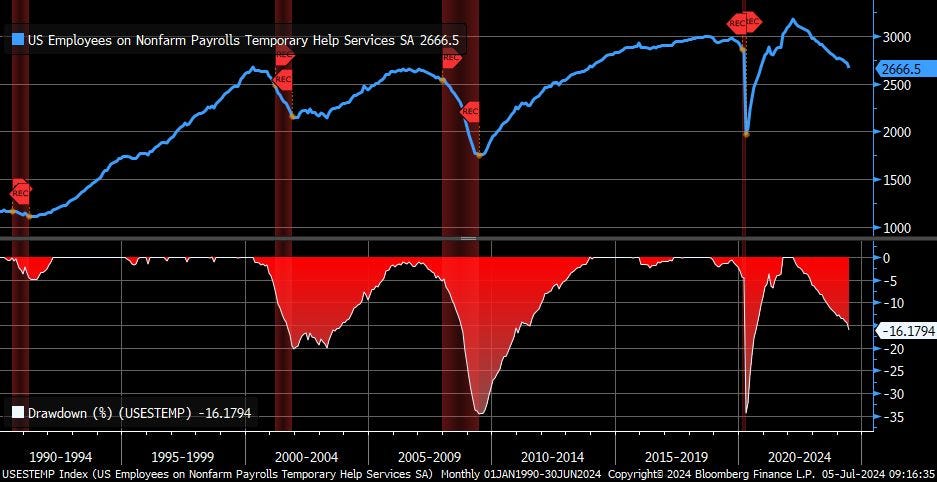The Illusion Of Persistence
Roy Scranton | The Rhythm Of Attention | Temp Services Payrolls Falling | Ghost Jobs

The future isn’t what it used to be, and the temporal stability we depend on to give our present reality the illusion of persistence seems less and less reliable.
| Roy Scranton, We Broke The World
…
Scranton’s dictum is possibly relevant in all spheres of life, but without a doubt, it holds for the field of inquiry that defines workfutures.io: the ecology and economics of work. Part of what I consider the mission of workfutures.io is tracking the many factors where the illusion of persistence is unraveling most quickly.
I am shaking up how I will be doing that. I aim to publish two columns a month, featuring long-form essays on pressing issues, along with two or three shorter posts — like this one — composed of brief observations or reviews, and a monthly recap that reflects on the subjects covered in the month’s posts and columns. The monthly recap will be free to all, but most of the writing in posts and columns will be reserved for paid subscribers.
I am also experimenting with what Substack calls ‘section’ newsletters. I’ve launched How To Use Time as an example, which is a compilation of essays I’ve written on that topic over the past few years. When finished, that newsletter — available to paid subscribers — will be turned into a digital ‘booklet’1.
Wish me luck.
The Rhythm Of Attention
The first installment of the new newsletter/serialized booklet, How To Use Time, has been posted. It is The Rhythm Of Attention:
What is the shape of time?
Is time a stream of sequential moments? Is it a 7 by 24 array of hours? Is it a procession of seasons, each following another? Or is time an unmoving tableau before which we march, serving as a backdrop to our motion? Is time a force to be reckoned with, or an ally that supports our aims?
How we envision time can determine how we make use of time, how we navigate via the clock and the calendar, and how we find our place in it.
Temp Services Payrolls Falling
Liz Ann Sonders, Chief Investment Strategist at Charles Schwab, reports:
Drawdown in temporary help services payrolls continues ... current decline only consistent with prior recessions.
Trump’s ransacking the economy through tariffs, and economic activity is starting to contract: temporary help services are the canary in the coal mine.
Ten years ago, I wrote about Paul Kedrotsky’s Ladder Index:
My friend Paul Kedrosky learned — around the time of the housing boom and bust — that California had begun to freely release various types of information. For example, the California highway department would publish data about what stuff was being found on the state’s highways each week. The number of mattresses was surprising. But Kedrosky plotted all the information and discovered what he came to call the Ladder Index.
Kedrosky first noticed a trend in the then-current few weeks, around the time he started to track the data: the number of ladders being found was dropping. He thought about it and realized that the number of ladders being found was, obviously, linked to the number of ladders strapped to vehicles traveling the highway. His insight was this: fewer ladders found meant fewer ladders traveling on the highways. And who uses ladders most? Construction workers!
Keep reading with a 7-day free trial
Subscribe to workfutures.io to keep reading this post and get 7 days of free access to the full post archives.

